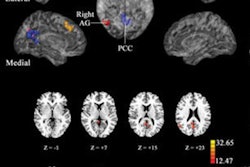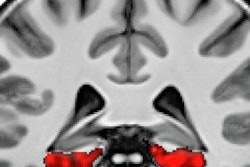
Researchers from Carnegie Mellon University and the University of Pittsburgh have received a five-year, $3.8 million grant from the U.S. National Institute of Mental Health (NIMH) to study suicidal thinking using functional MRI (fMRI).
The funding will be used to advance 2017 research conducted by Marcel Just, PhD, and David Brent, PhD, and to support its next iteration, a project called Predicting Risk Imaging Suicidal Minds (PRISM). Just and Brent will examine differences in brain patterns between suicidal and nonsuicidal young adults as the study participants think about words related to suicide; the researchers will then use machine-learning techniques to identify neural signatures of suicidal ideation and behavior, Just said in a statement released by Carnegie Mellon.
 Image from Just and Brent's 2017 study shows the brain activation pattern when participants who had made a suicide attempt (left) think about the word "death." The image on the right depicts the activation pattern for "death" in control participants. Image courtesy of Carnegie Mellon.
Image from Just and Brent's 2017 study shows the brain activation pattern when participants who had made a suicide attempt (left) think about the word "death." The image on the right depicts the activation pattern for "death" in control participants. Image courtesy of Carnegie Mellon."The cornerstone of this project is our recent ability to identify what concept a person is thinking about based on its accompanying brain activation pattern or neural signature," he said. "We were previously able to obtain consistent neural signatures to determine whether someone was thinking about objects like a banana or a hammer by examining their fMRI brain activation patterns. But now we are able to tell whether someone is thinking about 'trouble' or 'death' in an unusual way. The alterations in the signatures of these concepts are the 'neurocognitive thought markers' that our machine-learning program looks for."



















